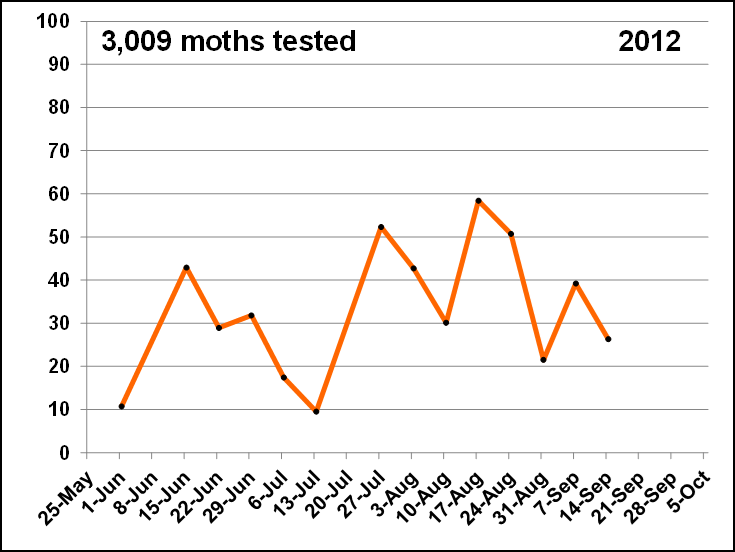D. Ames Herbert, Jr.
Extension Entomologist
Virginia Tech Tidewater AREC
Annually, we conduct a survey to estimate Helicoverpa zea (corn earworm) infestation levels in field corn in mid- to late July. Corn is considered a nursery crop for earworm, allowing the pest to complete a lifecycle and then move on to other crops such as soybean, cotton, and peanut in August. Over 30 years of data show that there is a linear correlation between the infestation level in corn and the amount of soybean acreage that gets treated with insecticide for this pest.
To conduct the survey this year, the number of corn earworms found in 50 ears of corn was recorded in 5 corn fields in each of 27 counties, totaling 6,750 ears and 135 fields sampled. When fields were known to contain Bt or non-Bt corn, this was noted. Otherwise, samples were considered to be random and assumed to be representative of the actual Bt/non-Bt composition in each county. Age of earworms, or if they had already exited the ears, was also recorded (data not shown). We greatly appreciate the help of Virginia Cooperative Extension Agriculture and Natural Resource (ANR) Agents, Virginia Tech faculty and staff, and volunteers in this effort. These cooperators are acknowledged below. We also would like to thank the many growers who graciously allowed us to inspect their fields for earworm.
Results of the survey can be found at the Virginia AG Pest Advisory (http://www.sripmc.org/Virginia/View.cfm?lngNewsID=1011). Statewide, approximately 18% of ears were infested with earworms. For comparison, 30% of ears were infested in 2012, 33% of ears were infested in 2011; 40% in 2010; and 36% in 2009. Regional averages for 2013 were 9.2% infested ears in the Northern Neck, 15.1% in Mid-Eastern, 15.7% in South-Central, and 23.4% in the Southeast.
This survey is intended to be a representative sample, not a complete picture. We always recommend scouting individual fields to determine exactly what is happening in terms of corn earworm as well as other pests and crop problems. Also, please check the black light trap data on the Virginia Ag Pest Advisory and other reports posted weekly to keep up-to-date on the insect pest situation.


